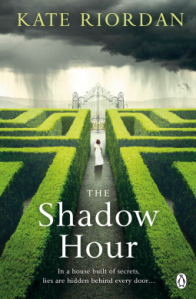
4*s
Despite coming to this historical crime series relatively late they have become a firm fixture in my autumnal reading with something so appealing in going back to seemingly less complicated times but of course not neglecting the fact that some people are always going to be bumped off! The bonus with this series is that the murder is more or less of page and the reader can enjoy the mystery without needing to get themselves overly anxious about the killing bit. And so it is for A Snapshot of Murder, the tenth in the Kate Shackleton series.
The year is 1928 and the Brontës are becoming big business, so much so that a museum is opening in Haworth and it’s big news. Back at home Kate is indulging in her other passion than sleuthing as a member of The Headingley Photographic Society. The young lad Derek proposes a group outing and although, as always when a committee is involved, there is plenty of huffing and puffing about the donation to be made and the location to be visited they eventually set off for the opening of the museum with the hope that they will capture some fantastic pictures in the bargain. One thing to say for these novels is that Frances Brody really knows how to lay the groundwork for book and luring you into a time and place.
As might be expected no sooner have they arrived in the picturesque location than there is a murder! As it happens the victim happens to be the most disagreeable male character so we can swiftly move on with nary a tear shed. Even better there is an instant mystery as his wife Carine, also a member of the photographic society, has just discovered that her fiancé a man she believed to have died in WWI is actually alive and well and returned ‘home.’ It also hasn’t escaped anyone’s notice that while Tobias Murchison was busy being disagreeable and boorish, young Derek had provided a bit of solace to Carine. The motives are stacked up, the opportunities catalogued and the local police predictably a little bit confused and so our intrepid sleuth Kate Shackleton is roped into the investigation.
As always with these books the chief protagonist comes over as a very capable woman. The setting may be many years ago but she is fairly modern in her outlook and not inclined to faints or vapours, or to be fair constantly underlining how difficult it is for women in society at the time. In fact I think I’d get on very well with Kate Shackleton who seems to have an abundance of intelligence and a fairly bright outlook on life when you take into consideration that she investigates the worst humanity can do to each other.
The settings are brilliantly done, with the link to the Brontë family and Wuthering Heights in particular the photographic theme lends itself so well to really setting the scene thereby conjuring up the much-loved book as well as setting the scene for murder in 1928!
As this is a series we meet some past characters including Kate’s bubbly niece Harriet but somehow unlike many other crime fiction series all the characters except those that take centre stage are more or less backdrops, so while it is nice to meet them the book really is focussed on the main players in the mystery itself.
I’d like to say a huge thank you to the publishers Little Brown Book Group, and the author Frances Brody for a thoroughly entertaining and enjoyable trip to Brontë land in A Snapshot of Murder!
First Published UK: 25 October 2018
Publisher: Little Brown
No of Pages: 448
Genre: Crime Fiction – Series
Amazon UK
Amazon US
The Kate Shackleton Series
Dying In The Wool: 2009
A Medal For Murder: 2009
Murder In The Afternoon: 2012
A Woman Unknown: 2013
Murder on a Summer’s Day 2013
Death of an Avid Reader 2014
A Death in the Dales 2015
Death at the Seaside 2016
Death in the Stars 2017







